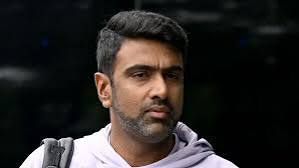In Indian cricket, players often attain a lifelong celebrity status, enjoying unparalleled adulation and rewards even after their playing days are over. However, Ravichandran Ashwin’s sudden retirement, announced midway through the Border-Gavaskar Trophy series, took everyone by surprise. His decision seemed driven by frustration or disappointment at no longer being a central figure in the Indian team’s plans. This raises a poignant question: when and how should a champion decide to call it a day?

The Dilemma of Timing
Retirement is unlike facing a fiery delivery—it’s a decision that cricketers can ponder for a long time. Yet, it is one of the toughest calls they must make. Recent examples, such as Tim Southee’s graceful departure, David Warner’s farewell at the Sydney Cricket Ground, and James Anderson’s celebrated exit at Lord’s, show how players can leave on a high with dignity.
These players had the opportunity to plan their departures in advance, allowing fans to bid them a proper farewell. However, retirement often involves a gentle nudge from selectors or management, as was the case with Anderson and Warner. While Warner has transitioned to commentary, Anderson’s post-retirement phase has been more challenging, including an unsuccessful attempt to join the IPL at the age of 42.
The Challenges of Letting Go
For champion players, moving on from the sport can be incredibly difficult. Many believe they still have what it takes to compete, even as advancing age begins to affect their performance. Batsmen may notice delays in footwork, misjudged lengths, or uncharacteristic dismissals. Bowlers may find themselves struggling for pace, bounce, or turn that once came naturally.
Sometimes, it’s not just a matter of skill but also diminishing motivation. As performances dip and selection pressures rise, players must confront the reality of whether they still have the fuel to keep going. This balance between protecting one’s legacy and recognizing the end is what makes retirement such a complex decision.
Legacy Matters
In India, cricket legends continue to live in the hearts of fans long after retirement. Players like Sunil Gavaskar, Kapil Dev, Sachin Tendulkar, Sourav Ganguly, Rahul Dravid, and MS Dhoni are celebrated for their contributions to the game. For many, leaving at the right time is as important as their achievements, ensuring that their legacy remains untarnished.
Ashwin’s abrupt retirement may have been influenced by a perceived lack of respect or recognition. As one of India’s greatest cricketers, he perhaps wanted to protect his legacy rather than endure further selection snubs.
The Next Wave of Retirements
Looking ahead, other Indian superstars like Virat Kohli and Rohit Sharma will eventually face their own retirement dilemmas. Virat, often referred to as cricket royalty, has already expressed his intention to leave the game on his terms, ensuring a graceful and dignified exit.
While most retirements are predictable, with players gradually nearing the finish line, exceptions like Ashwin and MS Dhoni rewrite the script. Yet, the decision ultimately boils down to an honest self-assessment, as no external advice can truly guide a player through this personal crossroads.
Retirement: The Beginning of a New Innings
Unlike the past, retirement is no longer a dead end for cricketers. The sport’s expanding ecosystem offers numerous opportunities to remain connected, whether through commentary, coaching, or administrative roles. For legends, retirement is less about stepping away and more about starting a fresh innings.
Ashwin’s decision might have been abrupt, but for many players, the transition to life beyond cricket can be a fulfilling journey, where they continue to inspire fans and contribute to the game in new and meaningful ways.


